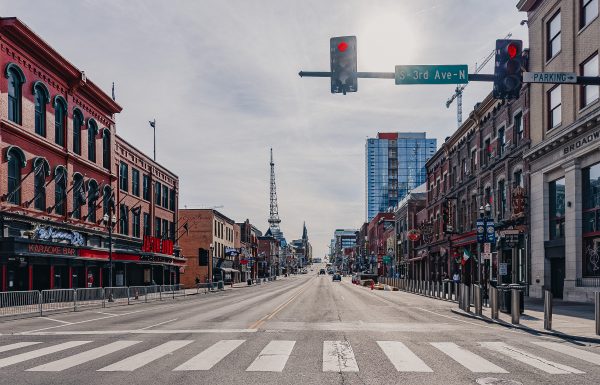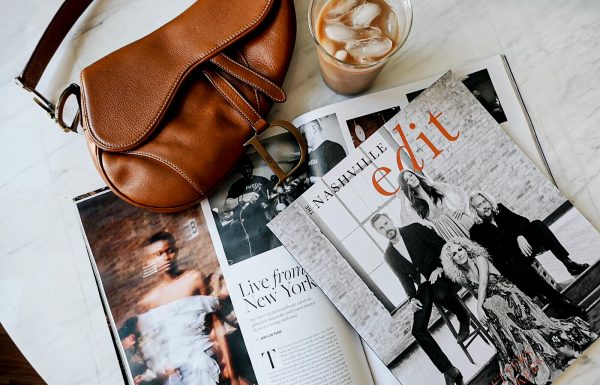
It’s no secret that Morocco is a photographer’s paradise. Ethereal and colorful, the lure and mysticism surrounding this extraordinary country has captivated the hearts of travelers for centuries. As a photographer myself, I had often fantasized about visiting this stunning North African country. So when a group of fellow photographers and friends asked me to join them on a two-week trip to Morocco, I did not hesitate to accept.
Of course, five photographers on a two-week-long Moroccan excursion means we collected enough content to fill an entire magazine with photos and tips from our travels. In fact, making selections from our archives of this adventure proved to be quite challenging. Instead of rambling on about the dos and don’ts of this journey, I decided to highlight my favorite Moroccan cities with suggestions of what to do in each, and let the imagery do the rest of the talking.
MARRAKECH

Marrakech acts as a central location and the best jumping-off point for visitors looking to explore all that Morocco has to offer. Perusing the shops and kiosks at Jemaa el-Fnaa yields sensory overload of the best kind—if returning home with a suitcase full of handmade jewelry, caftans, leather mules, and a rug or two is what you envisioned after vacationing in Morocco, then you’ve come to the right place. Magicians, fortune tellers and acrobats dance around tourists in an attempt to charm money from their pockets. In the souk, considerable strength is required to keep from filling your bags with the myriad of beautifully crafted artisanal goods lining the alleyways. Merchants here are much more aggressive than in other parts of the country, and if you all but glance at an item on display, prepare to be preyed upon. While this can be irritating at times, it provides the opportunity to return home with quality items at incredible prices… that is, if you’re able to stand your ground. Haggling is customary, so don’t settle on a price right away. If bargaining is not your forte, there are a number of boutiques just outside the souk with fixed prices. The appointment-only atelier Ministero del Gusto (reportedly a favorite of Kate Moss) has a remarkable selection of custom jewelry, or, if you’d like a curated selection of artisanal goods, try 33 Rue Majorelle.

The shopping is great and the food delectable, but Kech’s natural beauty can’t be beat. Marrakech is home to two of the country’s most famous botanical gardens. The Majorelle Garden, created by the French Orientalist artist Jacques Majorelle, is a two-and-a-half-acre garden located just north of the medina. In addition to cubism-inspired architecture and beautiful flora, the gardens house the Islamic Art Museum of Marrakech, Berber Museum, and the recently opened Yves Saint Laurent Museum, a tribute to the famous designer and his ties to Marrakech. Though a bit further out from the central part of the city, the Menara Gardens are a must-see, as well. The olive groves and massive reflection pool have been a fan favorite for tourists and locals alike. Gazing at the reflection of the Atlas Mountains on the water’s surface amidst the intoxicating smell of fresh olives is an experience that is sure to take your breath away.
If you aren’t exhausted by the end of the day, a nightcap and delicious meal from Le Salama near Jemaa el-Fnaa are the perfect ending for your explorations in this captivating city. From here, the rest of Morocco awaits.
ESSAOUIRA

Located on Morocco’s Atlantic coastline, the small town of Essaouira was our reprieve from the frenetic clamor of the bustling Marrakech streets. With a population of roughly 78,000, Essaouira’s proximity to Marrakech makes it the perfect weekend trip for any traveler looking to escape the city and relax near the ocean. The area is known for its wildly fresh fish, and fishermen can be heard long before they’re seen at the pier, shouting out prices and species of fish at any passerby willing to listen. The shops and markets in the medina are much less crowded than in most major cities in Morocco, and shopkeepers are ostensibly uninterested in haggling with customers, which makes the experience altogether more enjoyable.
Essaouira is a hidden gem, mostly undiscovered and untainted by the throngs of tourists that pack the major cities’ streets. Get here before they do. Pro tip: book your accommodations within the medina and be sure to check out Galerie la Kasbah, an art gallery built into a restored 18th-century riad. Finish off a day of walking the artisan-filled streets with a pastry from Pâtisserie Driss, a beautiful bakery and cafe just off the main square (the cake balls are a must).
CHEFCHAOUEN

While the number of tourists visiting Morocco increases every year, none can deny the significant attention Chefchaouen, in particular, has garnered through the rise of social media. A popular destination among Europeans, the small town nestled in the Rif mountains is famous for its azure streets and buildings. This “Blue Pearl,” as some call it, resides in the northernmost region of Morocco, and while there are several theories as to why the city’s walls were painted its varied shades of blue, many believe that it was meant to symbolize the sky or heavens and thus encourage those who look upon it to lead a spiritual life.
With the Rif mountains surrounding the city by 360 degrees, nature lovers will no doubt get their fill here. Rising 6,500 feet above the Mediterranean, these lesser-known cousins to the Atlas mountains boast some of the best hiking routes in Northern Africa. Taking the 30-minute taxi ride outside of Chef to explore the Rif and its unbeatable panoramic views is a must for travelers visiting this region.

For the more adventurous type, the two-day trek to Talassemtane National Park proves quite the spectacle. This national park was created in 2004 to conserve the last of the Moroccan fir forests and spans nearly 400 square miles. Popular day hikes in the area include God’s Bridge, a beautiful rock formation resembling a stone archway that spans a river, and the Cascades d’Akchour, where hikers can cool off in the rock pool basins below the breathtaking waterfalls scattered along its trail.
It should come as no surprise to hear locals speaking Arabic, French and Spanish in Chef, as the region was under Spanish rule from 1920 all the way up until Morocco gained independence in 1956. Despite its complicated and tumultuous past, the Chefchaouen we know today boasts a culturally rich tapestry: a coalescing of Moorish, Jewish, Muslim and Berber culture in quite possibly the most beautiful mountain town I have ever seen. A stop here is well worth the time, and travelers will no doubt experience the peace and quiet it offers even despite its growing popularity among tourists. Escape the crowds by popping into La Lampe Magique at Aladdin’s for lunch on the rooftop or watch the sun set over the city from the Spanish mosque’s stunning hilltop.
THE SAHARA

Whenever I’m asked about our trip to Morocco, my mind immediately returns to the desert. I will never forget hiking to the summit of the near-thousand-foot dunes, the rolling, golden hills stretching out for miles before us. I remember our guide pointing out the border of Algeria and Morocco, but whatever delineation between the two countries was lost in the waves of red and gold sand. Never in my life did I think I would see the Sahara desert. A bucket-list destination in its own right, traveling to Morocco without spending a night under the stars here seems a flagrant lapse in judgment.
The Moroccan Sahara runs along the eastern border of the country and requires a full day of travel to get to, anywhere from 8-12 hours when coming from Marrakech or Fez. While you can rent a car for this journey, I would not recommend driving out into the desert yourself. Hire a driver. The landscape’s harsh terrain and lack of proper road demarcation means all too many uncontrollable variables for an amateur to be piloting an expedition into the desert on his or her own. Fortunately, most desert camps and private tours arrange transportation to and from accommodations in neighboring towns, and provide guests with guides to accompany them on their excursion. The experience can then be stress-free and require little to no navigating on your own part, and should be kept that way. The two primary desert destinations in the Moroccan Sahara are Erg Chebbi and Erg Chigaga. The Erg Chebbi sand dunes, the most accessible and sought-after of the two, are located minutes from a variety of housing options found in Erfoud or Merzouga, giving travelers the option of spending their nights in the comfort of a modern hotel with their days free to explore the desert. For those that like to travel off the beaten path, though, the Erg Chigaga sand dunes further south offer a more adventurous experience. Getting to these dunes from Zagora or Foum Zguid is laborious and takes nearly two hours by car.

We chose this route and suffered an unfortunate flat tire amid the rocky, barren landscape of the desert in the process; we now recall the tale in amusement, though at the time it did not seem to be a laughing matter. The Moroccan kindness and hospitality we had come to know so well on our trip proved itself again when a group of travelers selflessly donated their only spare to our cause. The rest of the trip went on without a hitch, but to save yourself the potential headache, I’d recommend beginning your maiden journey into the Sahara at Erg Chebbi instead.
Of course, no matter the route you decide to go, Erg Chebbi or Erg Chigaga both will offer you opportunities to ride a camel, sleep under the stars, traipse the immaculate dunes and run the golden sand through your fingers. If you do stay at a hotel in one of the neighboring cities, private overnight tours or accommodations at desert camps can be booked in advance if you’d like to spend a night or two out under the stars of the Sahara. The Desert Luxury Camp in Merzouga (www.desertluxurycamp.com) is a popular one, but there are countless others that provide the same services.
A trip to Morocco is no four-day getaway — it’s a week-long commitment at the very least and requires planning for ample amounts of time to travel between cities. But don’t let this adventure scare you off; I can assure you that every minute spent traveling is worth it, and the journeying is just as beautiful as the destinations themselves. This article only begins to scratch the surface of all that this country has to offer. If a sense of wonder if what you’re aiming for, Morocco is your destination. There’s no question that you’ve arrived in a foreign land. Full of color, magic and thrill, you may just never want to come home.






